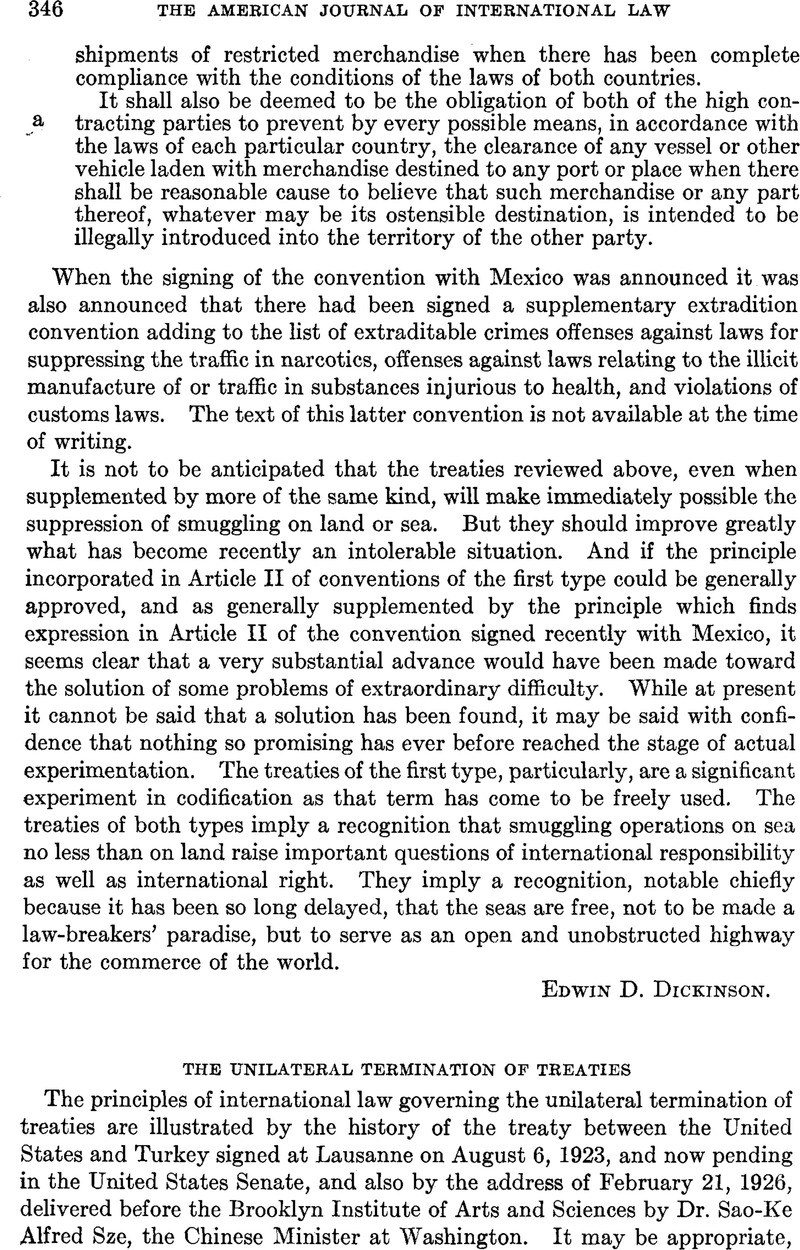Article contents
The Unilateral Termination of Treaties
Published online by Cambridge University Press: 04 May 2017
Abstract

- Type
- Editorial Comment
- Information
- Copyright
- Copyright © American Society of International Law 1926
References
1 Pierre Crabites, Amer. Bar Assoc. Journal, Vol. XI, p. 485.
2 Edgar Turlington, this Journal , Vol. 18, p. 699.
3 The Turkish delegation was supported also by the fact that the so-called Turkish National Pact, which had been approved by the Parliament at Constantinople, January 28, 1920, and was in the nature of a constitutional law, contained a declaration that the restrictions imposed upon Turkey by the capitulations could no longer be tolerated. The Turkish delegation stated that their government had declared before the convening of the Lausanne Conference that this pact embodied the conditions upon which alone a durable peace could be made.
4 Fodéré, Pradier, Vol. II, p. 264, 1911.Google Scholar
5 Turkey No. 1, 1923, Lausanne Conference on Near Eastern Affairs, pp. 478-479.
6 Lausanne Conference, H. M. Stationery Office, Cmd. 1814, p. 465 et seq.
7 Willoughby, , China at the Conference, pp. 55-79.Google Scholar
8 Id., 116.
9 Id., pp. 113-115.
- 5
- Cited by


